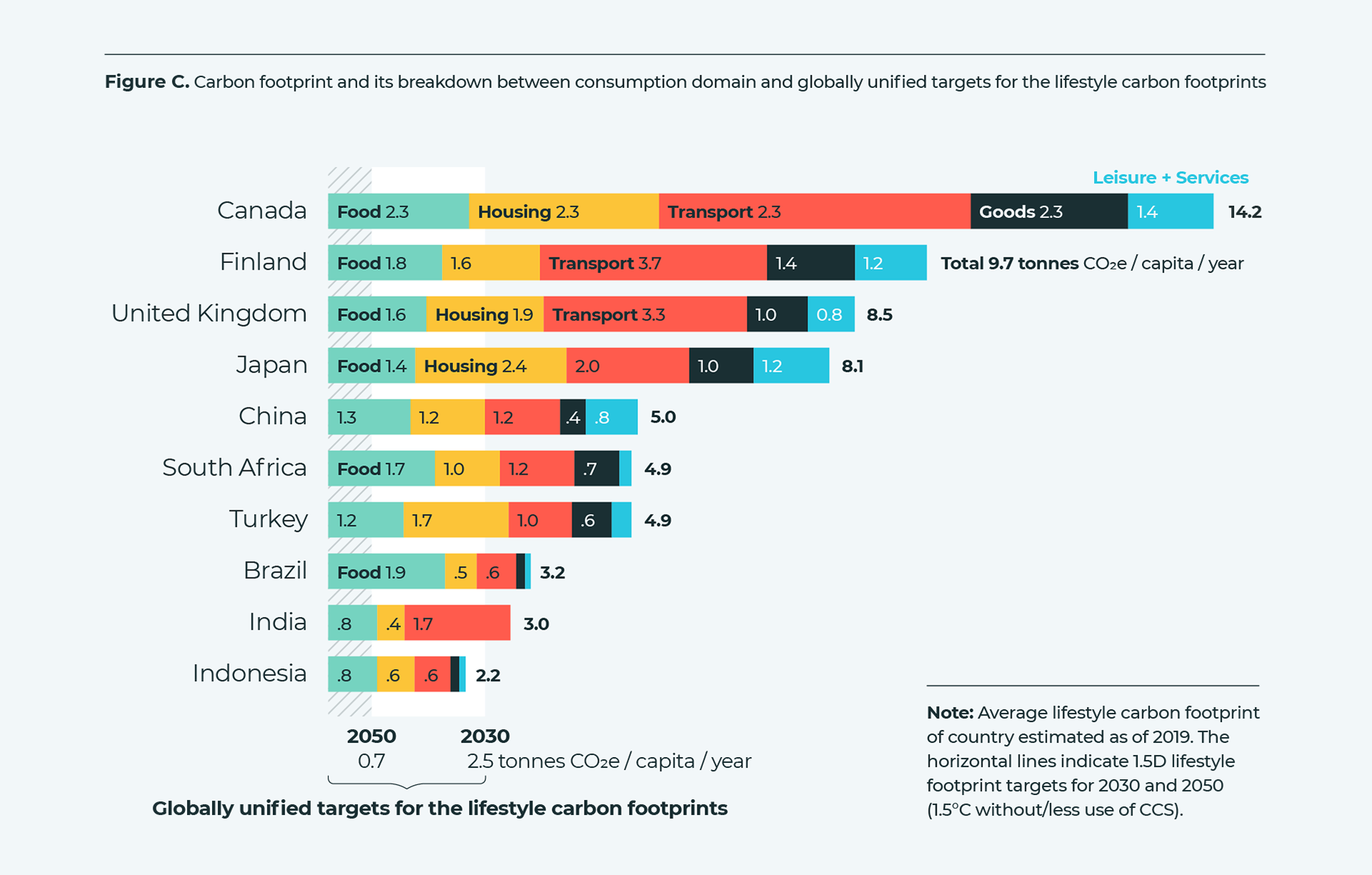Polls show that Canadians are ready for ambitious climate action. Bold initiatives are already underway, and many funders are providing support to move the country in a sustainable direction.
But we’ll only reach our climate and nature targets if we transform the carbon-intensive aspects of our daily lives and tackle overconsumption. As Canadians, we have a responsibility to “be the change that we seek in the world” and to model sustainable ways of living.
- 77% of Canadians think something needs to be done about climate change.
- 51% believe there’s a need to “balance economic considerations with environmental efforts”.
- 84% are more concerned about extreme weather events today compared to five years ago.
IPSOS Poll, August 2021
Canadians have some of the largest footprints per capita in the world – we rank alongside the United States, Australia, New Zealand and parts of the Middle East.
Our per capita carbon footprint is 14.2 tonnes per person per year – three times the global average (see figure). Analysis shows that we need to transform this footprint to 2.5 tonnes by 2030 and 0.7 tonnes by 2050, with actions across the areas of food, housing, transport, goods, and leisure and services.

But even within Canada, our impacts and pathways will differ:
- The richest 10% have a 66% bigger ecological footprint than the average Canadian household.
- We need to support Indigenous communities and people who are already living sustainable lives today.
“Canadians voted for more climate ambition and action…. The science is clear: if we want to protect lives, livelihoods and ecosystems by limiting warming to 1.5 degrees, Canada must accelerate efforts to cut emissions. Our communities and our climate can’t afford any more delays.”
Caroline Brouillette, Climate Action Network / Réseau action climate Canada
Common Q&As
Shouldn’t we focus on those countries with the biggest impacts and populations, like the United States, Australia, India and China?
It’s true that Canada accounts for only 1.5% of global greenhouse gas emissions, but the average footprints of our daily lives are still beyond our fair consumption space. If everyone in the world lived like the average Canadian, we’d need five Earth-like planets to fulfill our demands on nature – and we only have one Earth.
Not everyone lives a high-consumption lifestyle, and some need to increase their consumption to have their basic needs met. Those of us with high-carbon lifestyles need to transform to low-carbon lifestyles to live within our fair Earth share.

Canada’s biggest emitter is the oil and gas industry, so why focus on individual households?
As individuals, we use oil and gas for heating and cooling, transport and cooking. The residential sector accounts for a quarter of Canada’s total energy use. So, households have untapped opportunities to help meet the country’s climate targets.
As Canadians, we live across a vast range of geographies and climates, so how can we compare ourselves against other countries?
Other countries that face similar challenges, like Finland, have found solutions that we can learn from. While it’s unfair to ask individual Canadians to transform carbon-intensive lifestyles on their own, we can focus on society-wide changes by governments, business, cultural institutions and communities to enable Fair Earth Living.
Canada has already taken significant steps to reduce per person emissions and to invest in renewables like hydropower – isn’t that enough?
Yes, we’re doing many things that move us in a sustainable, climate-friendly and just direction. But the scale of the challenge requires us to take deeper, transformative actions across all aspects of society – including rethinking carbon-intensive and destructive consumption patterns. As Canadians, we have a higher responsibility to reduce our overconsumption so that other people and species can have decent and thriving lives.

